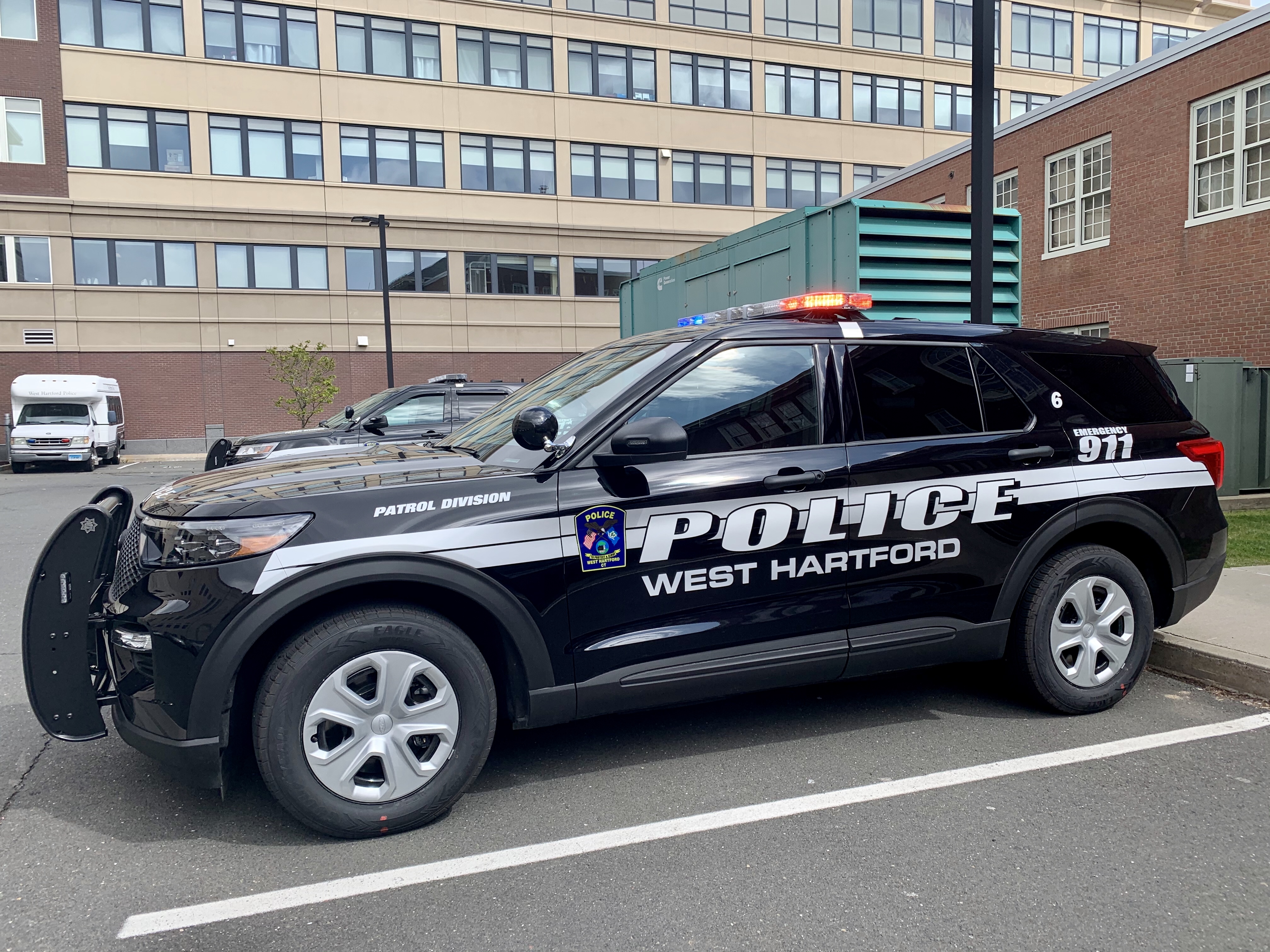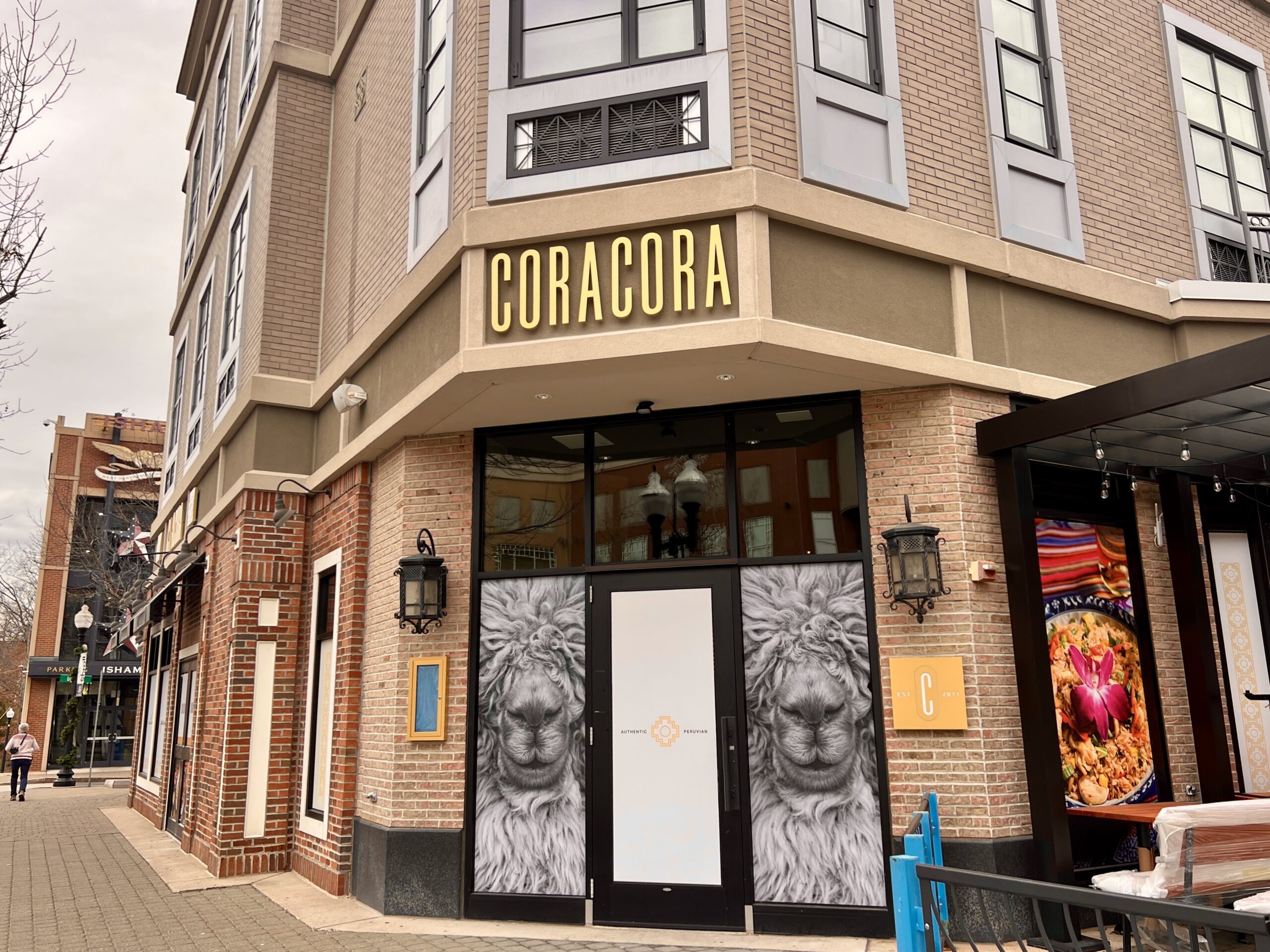West Hartford Pays Homage to Those Enslaved in Witness Stones Installation Ceremony

Audio By Carbonatix
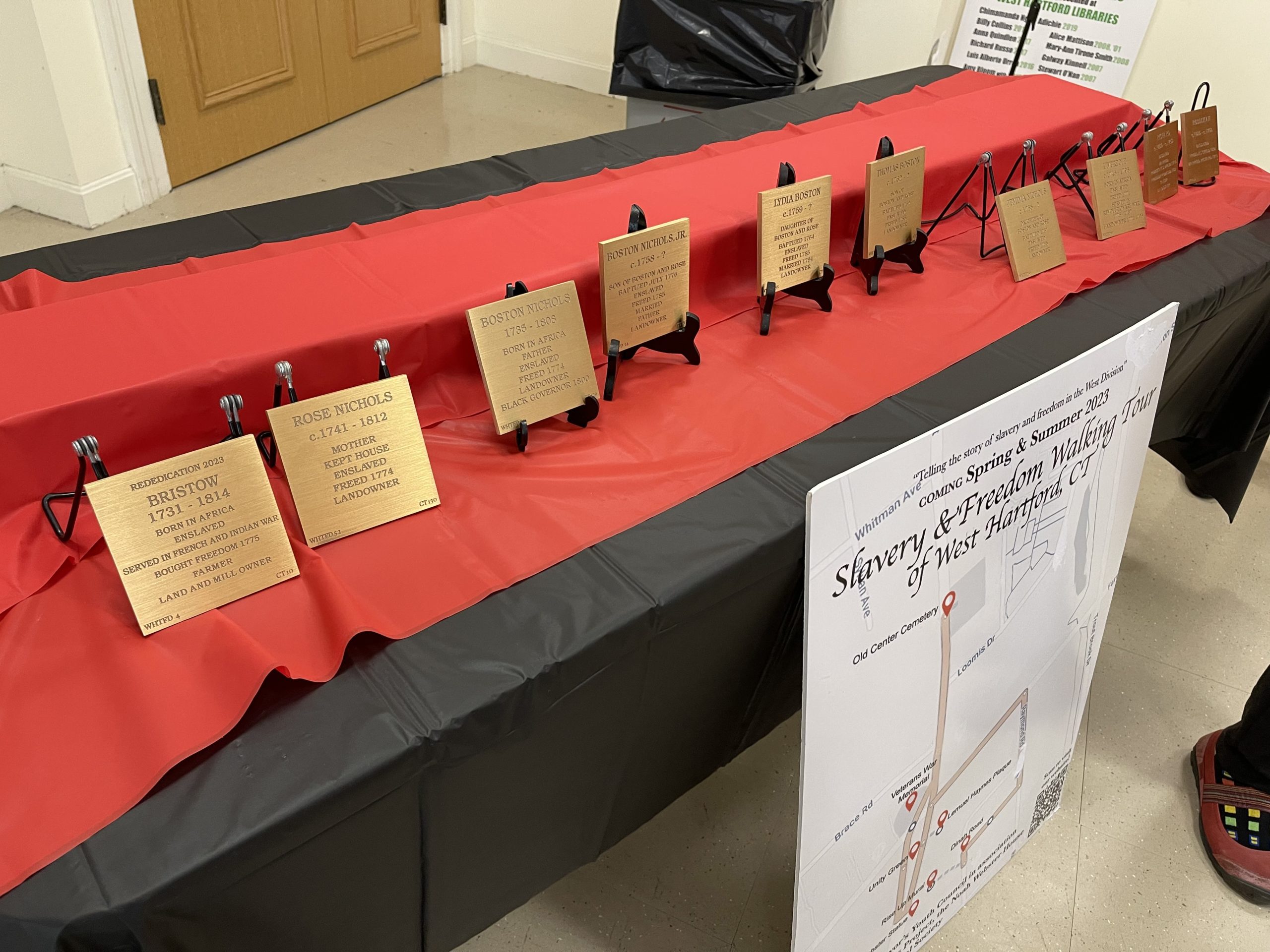
West Hartford Witness Stones. Photo Credit: John Lyons
A group in West Hartford has been examining enslavement in town, and the previously unreported local historical significance of the one of the most atrocious and heinous institutions in American history.
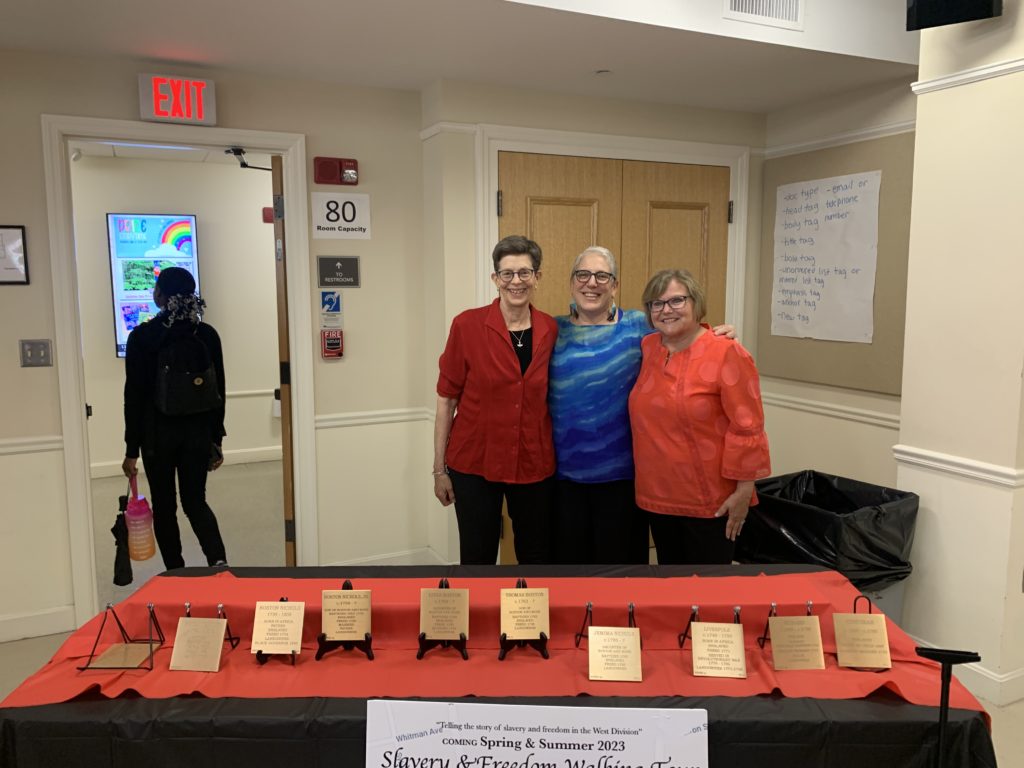
From left: Tracey Wilson, Liz Devine, and Denise deMello have led Witness Stones West Hartford, and on Saturday led the dedication of additional Witness Stones. Photo Credit: Bridget Bronsdon
By Bridget Bronsdon
Through a deeply local perspective, West Hartford local leaders and students had the chance to come together in the days before Juneteenth to hold a Witness Stones Installation Ceremony – commemorating and paying tribute to local slave history.
The Witness Stones Project aims to “restore the history and honor the humanity of the enslaved individuals who helped build our communities.” Through immense research, exploration, and analysis of local history, West Hartford, which began a Witness Stones Project in 2018, was able on Saturday to honor another 10 of the 100-plus formerly-enslaved individuals who walked the same grounds we do today.
West Hartford’s town historian, Tracey Wilson, commenced Saturday’s ceremony – which had been moved to the Noah Webster due to expected rain – to recognize the true meaning of the ceremony, especially from a local perspective. While the institution of American slavery is one widely discussed across the nation, it is critical to recognize the role both Connecticut and West Hartford played in the nationwide institution, she said.
“We recognize that we are standing on land where enslaved people walked and were forced to toil,” said Wilson.
“We recognize that we need to be good stewards of this land knowing that the way we name and mark this land and who has the power to do so are part of what define us as a community.” Wilson continued, “We are here to learn today about 10 of the more than 100 people who were enslaved here between 1693 and 1830.”
In addition to dedicating a new set of Witness Stones, the audience took turns holding up the names of enslaved West Hartford residents to bring recognition and honor.
Through local analysis that has greatly involved the work of many students, Wilson brought attention to the details of West Hartford’s role in history. “From the islands, people in this town bought coffee, sugar, spices, all produced by forced labor. And they bought human beings.” While it may be shocking to learn, Wilson said “In 1790, Connecticut had more enslaved people than any other New England state. For many students and townspeople, it is a surprise to learn that the institution of slavery undergirded the economy and community here.”
Although horrific, Wilson reminded onlookers that while it may be difficult to hear, it is important to learn these intimate details that hit so close to home. “This research, we believe, helps to build a stronger community by getting at the truth of what happened in the past. The history we tell about our town will make us better understand justice and injustice, fear, daring, disappointment, and celebration. The history we privilege in our town can call people into a discussion of how we belong.”
In order to forge these historic connections with local history and today’s students, historians worked with five Kingswood Oxford U.S. History classes, 20 eighth-grade US History classes at King Philip and Bristow Middle School, the middle school classes at Solomon Schechter Day School, and two fifth-grade classes at Renbrook. Wilson remarked that students were able to amplify the history and stories of just a few of the enslaved who resided in West Hartford.
The following individuals were researched this past year and then honored at the Witness Stone ceremony: Boston and Rose Nichols and four of their nine children: Lydia, Boston Jr., Thomas, Thomas Boston, and Jemima Nichols. Liverpool, Richard, Rebeckah, and Bristow were also honored on Saturday morning.
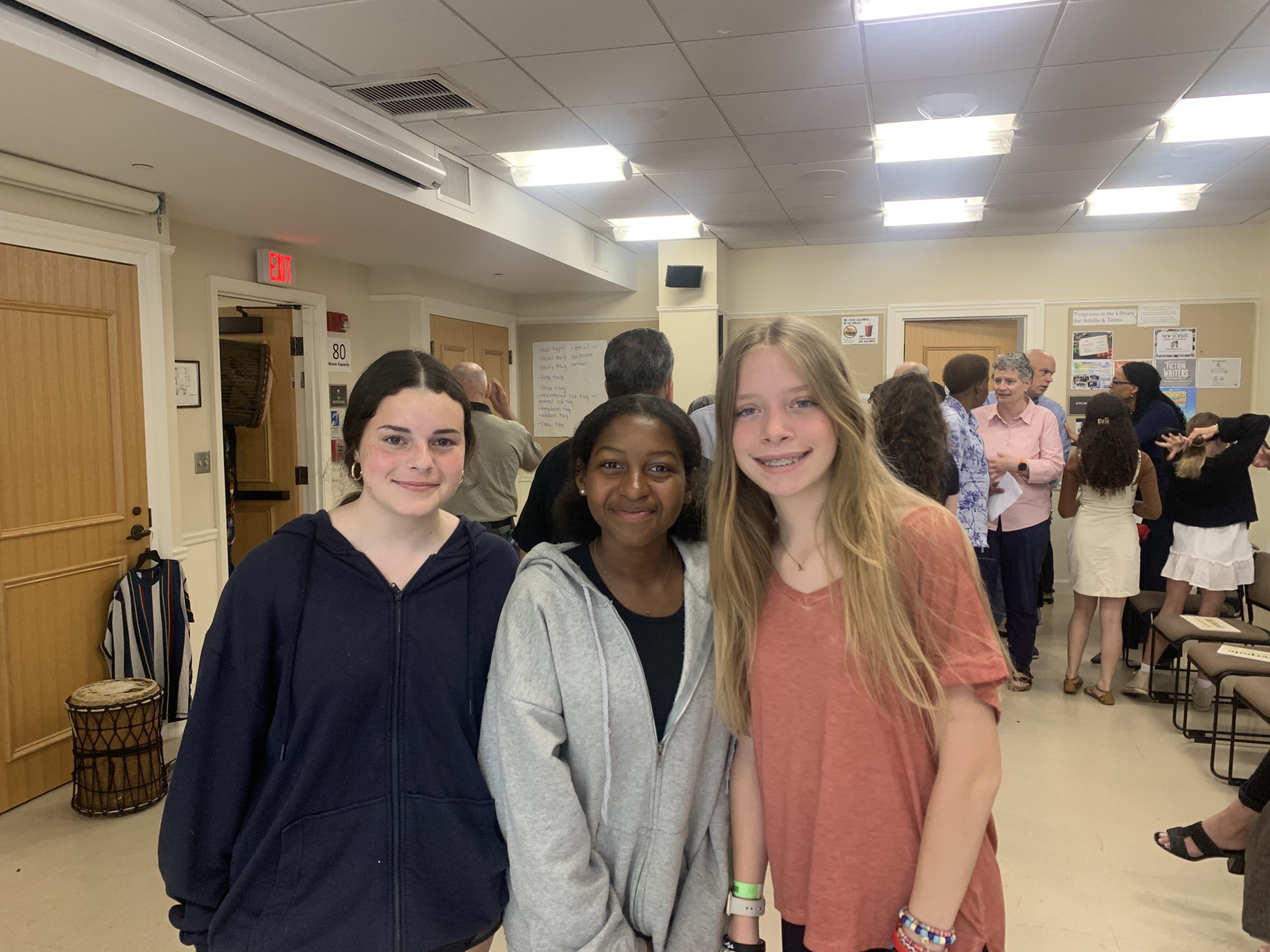
Student speakers Maddie Bean, Abby Valentin, and Nia Cole at West Hartford’s Witness Stones Installation Ceremony. Photo Credit: Bridget Bronsdon
Bristow, a highly recognizable name for most West Hartford residents, has a deep history that is largely unknown. In 2005, Bristow Middle School was named after Bristow, an enslaved man who had resided in West Hartford. Current students Maddie Bean, Abby Valentin, and Nia Cole realized that Bristow’s original Witness Stone installed in 2019 included his enslavers’ name on it. The students appealed to rededicate the stone to focus on Bristow and one of his newly-discovered achievements – his involvement in the French and Indian War. This rededication kick-started the ceremony to remind the audience that these stories need to continue to be told as new information is still being discovered.
Students Amaia Potasher and Katie Dixon then read poems they had written about Bristow. In Potashner’s poem ‘Bristow was Never Really Free’ she says, “Even though he was technically free, it’s not like his life just became easy.” In Dixon’s reading ‘A Walk Through Hardship’ she wrote, “For what seems like the end of a story is just the beginning. He wouldn’t know it then, but his story would be important to the history of our town. His memory lives on in the history that defines our community.”
Following these readings, members of the community read the presentation of the stones. Anissa Lewis, a Kingswood Oxford student, studied Boston and Rose Nichols and their family. Boston, an enslaved man who was trafficked from West Africa, was brought to Antigua, and then finally to America where he married Rose, an enslaved woman born in the American colonies. Boston and Rose, parents to nine children, resided on Charter Oak Avenue in West Hartford before moving to Rocky Hill, CT. The couple was freed in 1774, but their nine children would stay enslaved for 11 more years until finally being granted freedom due to the death of their enslaver.
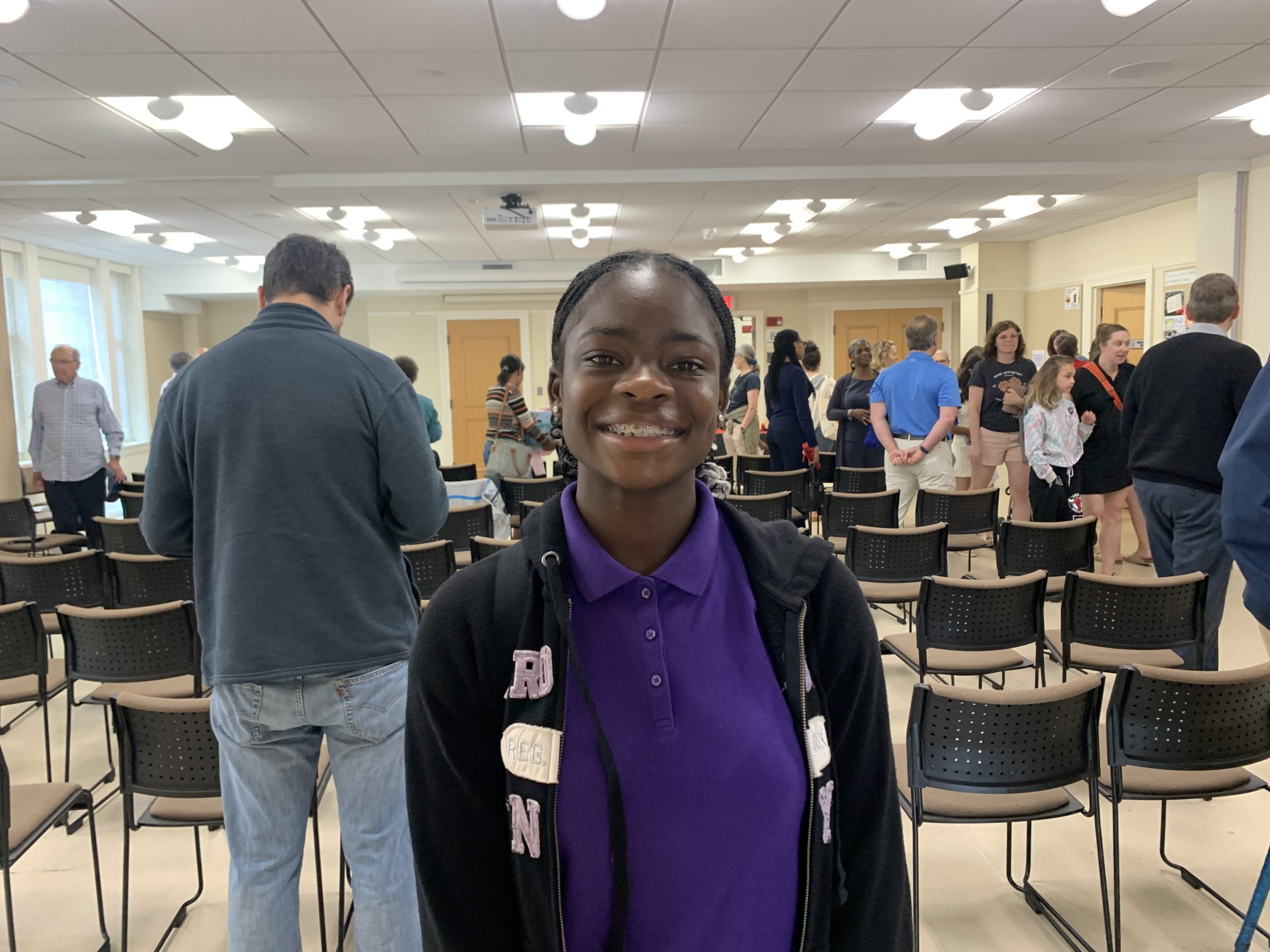
Student speaker Anissa Lewis at the Witness Stones Installation Ceremony. Photo Credit: Bridget Bronsdon
“Their lives have been summarized in just a few sentences, but their legacy lives beyond words,” Lewis noted. “These were real people that lived real lives that made a real impact and they deserve to be remembered as such.”
Deputy Mayor Liam Sweeney also remembered Boston Nichols and reminded the audience that “getting comfortable being uncomfortable is something we have to embrace.”
Alongside the Witness Stones for Boston and Rose Nichols were four of their children: Boston Nichols Jr., Lydia Boston, Thomas Boston, and Jemima Nichols. All children were born into slavery and stayed as such until they were freed in 1785 upon the death of their enslaver. As much information still remains unknown about the family, they will forever be honored by West Hartford’s Witness Stones.
Georgia Macel and Caiden Woodson, Renbrook students, then recounted the life of Liverpole. Liverpool was trafficked from Africa and then enslaved and forced to work in a tavern and farm. Upon his enslaver’s death in 1771, Liverpool was freed and given six acres of land. One of the most notable aspects of Liverpole’s life was his time serving in the 3rd Connecticut regiment of the Continental Army during the Revolutionary War.
The lives of Richard and Rebeckah were then remembered. The pair were married however it remains unknown whether they had children. It is often wondered how Rebeckah, a free woman, and Richard, an enslaved man, navigated the world of both slavery and freedom.
In the wake of new information being uncovered regarding West Hartford’s role in the institution of slavery and the ongoing exploration of local history, Wilson acknowledged the goal to “commemorate and uncover things that have been lost for so many years.” As 50 stones have now been installed in the Old Center Cemetery, they prove to be “powerful symbols of the lives of men and women and reminders of a colonial past in this town based on the lie of racial inferiority,” Wilson stated.
Following the touching presentation and recognition of the lives of 10 of West Hartford’s own formerly enslaved, Ailani Roach, a member of the Mayor’s Youth Council and teen leader for West Hartford’s new walking tours, spoke. “Most people do not acknowledge that slavery was also rampant on the ground of which we have gathered today.” This summer, West Hartford is proud to initiate Slavery and Freedom Walking Tours, she said.
After a moving ceremony dedicating the 10 new Witness Stones, speakers reminded onlookers that there is still work to be done. To close out the morning, Wilson provided an excerpt from Amanda Gorman’s poem, “Faith and Fury.”
“Our goal has never been revenge, just restoration; not dominance, just dignity; not fear, just freedom; just justice,” she read.
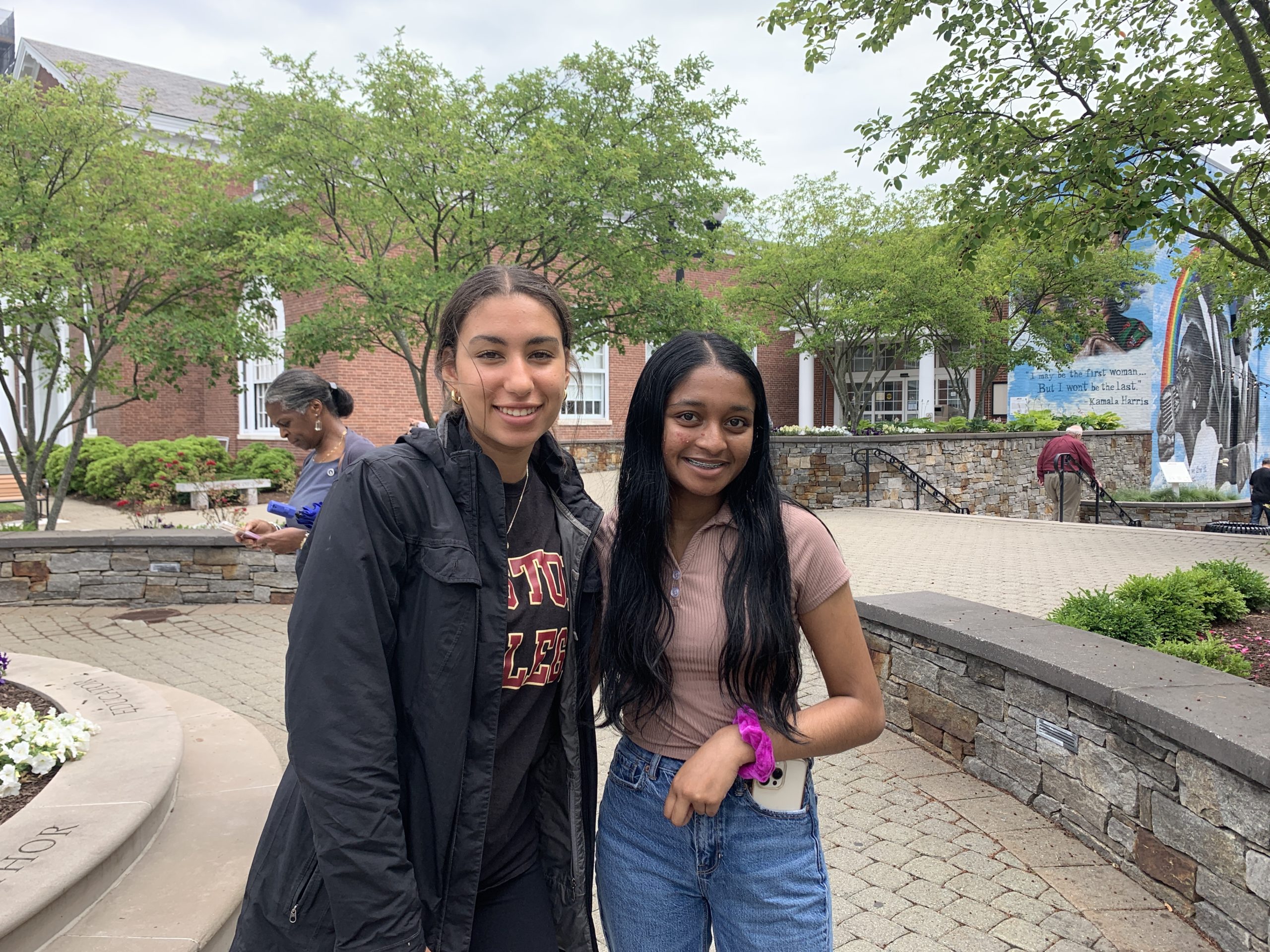
Teen leaders who will be guiding West Hartford’s Slavery and Freedom Walking Tours. Photo Credit: Bridget Bronsdon
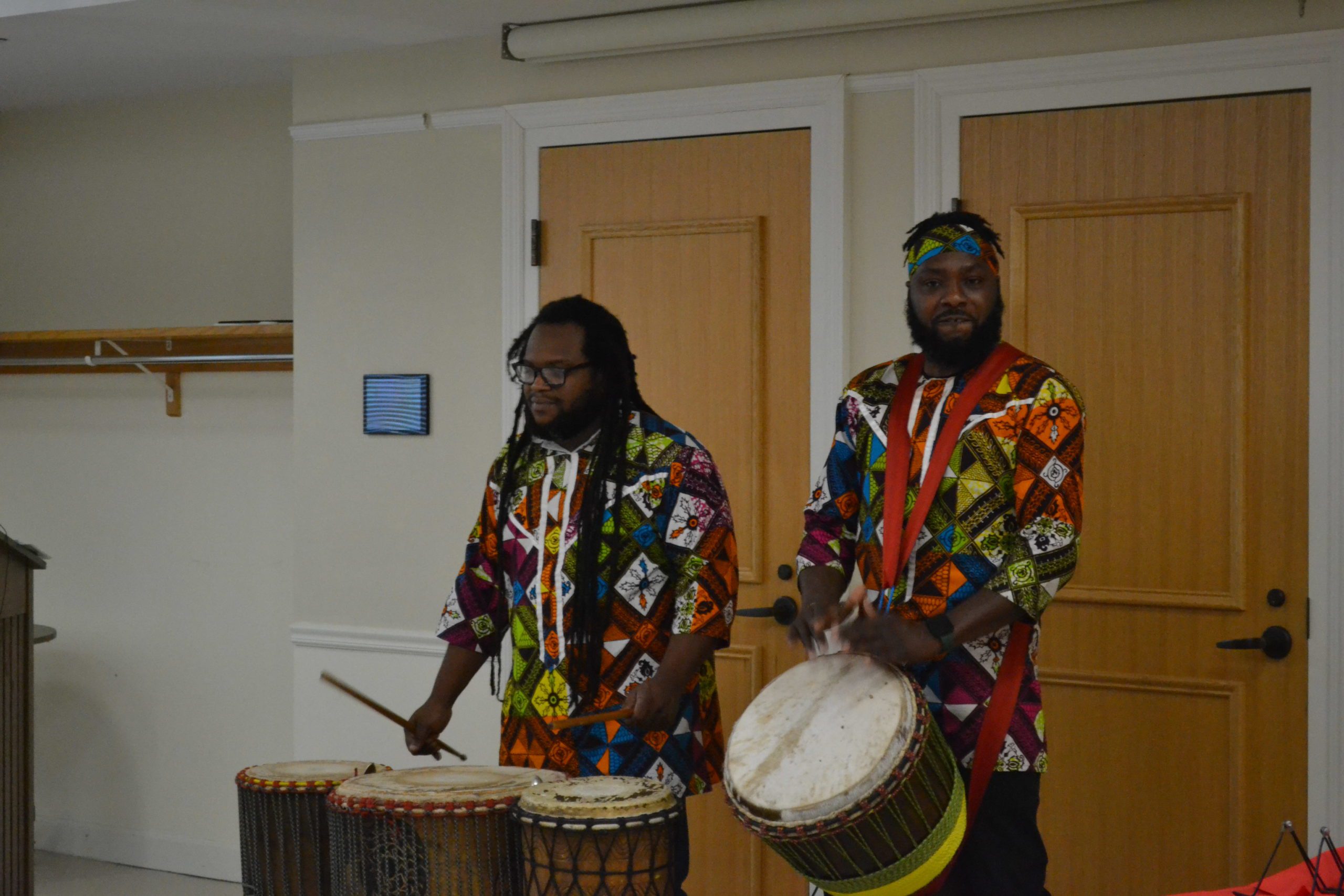
Curtis Greenidge Friendz World Music welcoming the Witness Stones Installation Ceremony with a drum performance. Photo Credit: Bridget Bronsdon
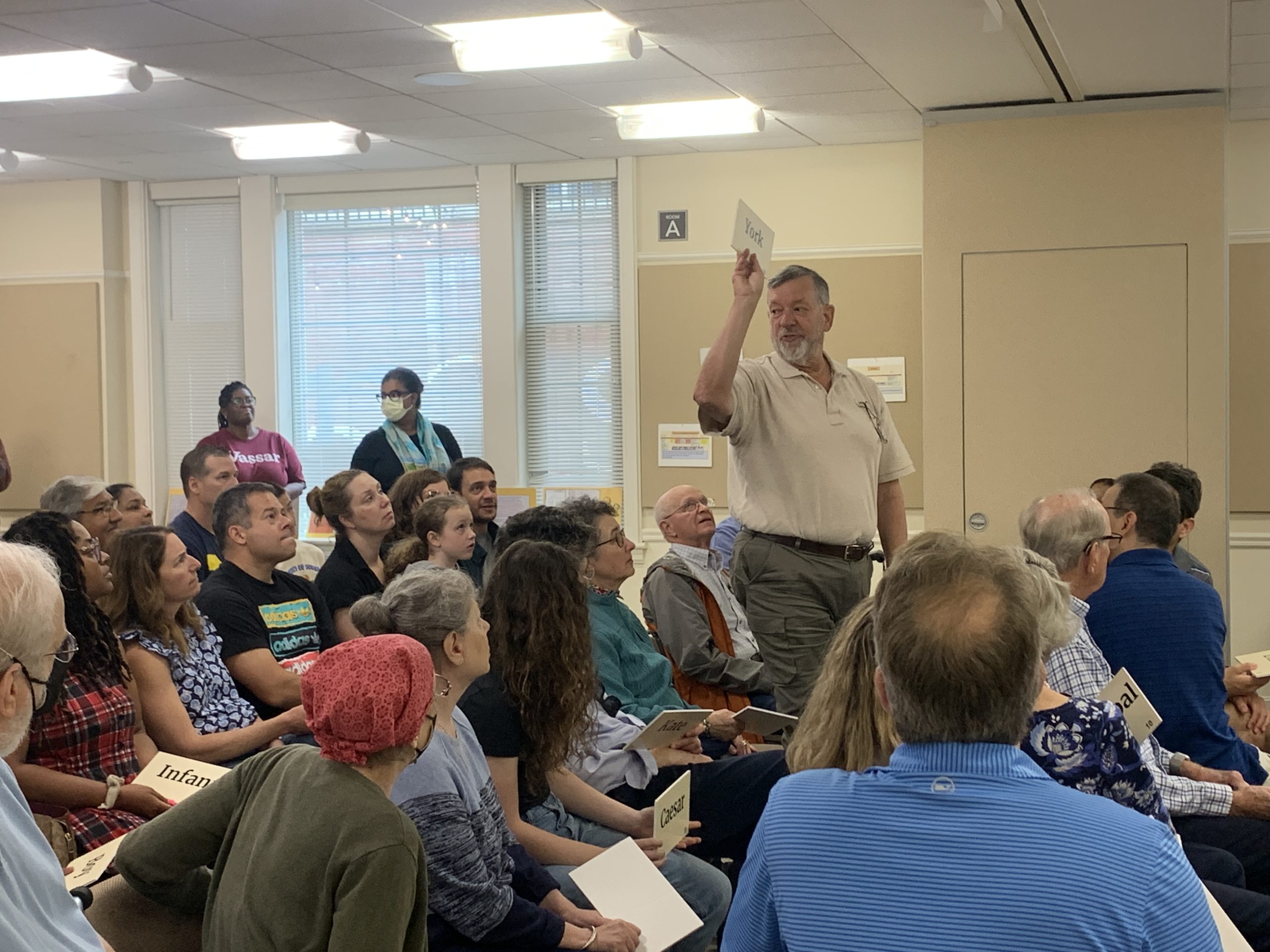
The reading of the names of enslaved locals who resided in West Hartford. Photo Credit: Bridget Bronsdon
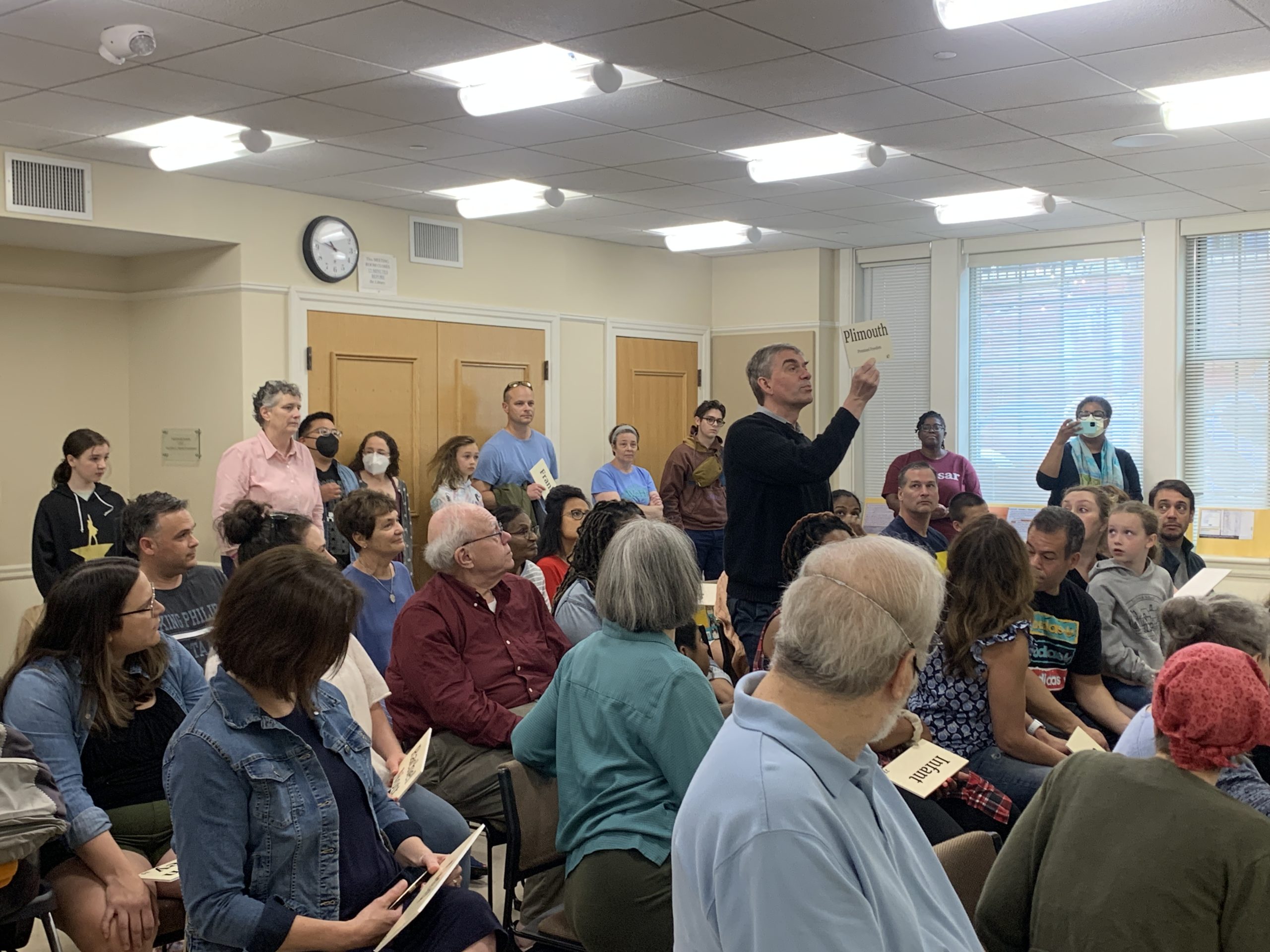
The reading of the names of enslaved locals who resided in West Hartford. Photo Credit: Bridget Bronsdon
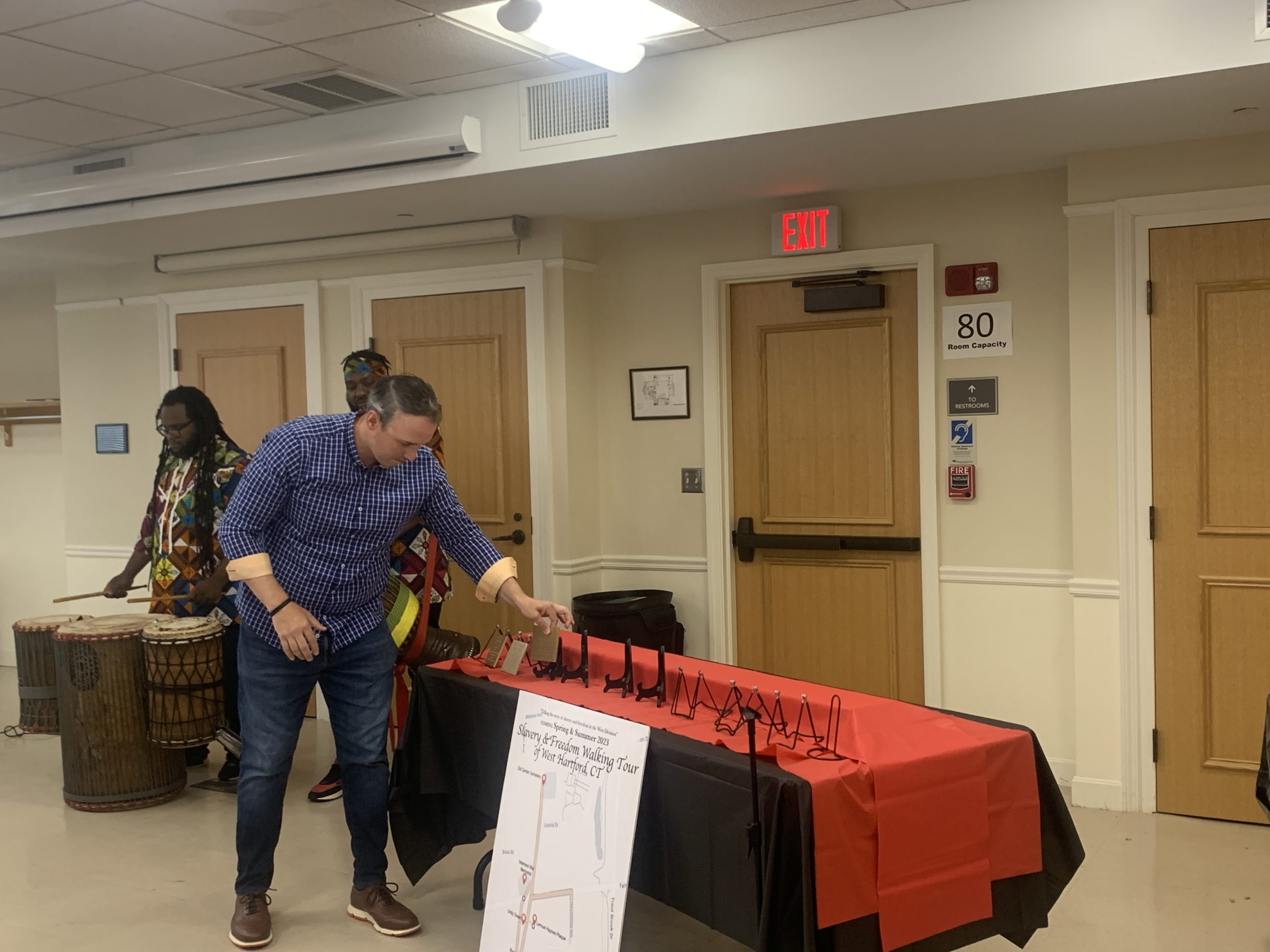
Deputy Mayor Liam Sweeney at the Witness Stones Installation Ceremony. Photo Credit: Bridget Bronsdon
Like what you see here? Click here to subscribe to We-Ha’s newsletter so you’ll always be in the know about what’s happening in West Hartford! Click the blue button below to become a supporter of We-Ha.com and our efforts to continue producing quality journalism.


